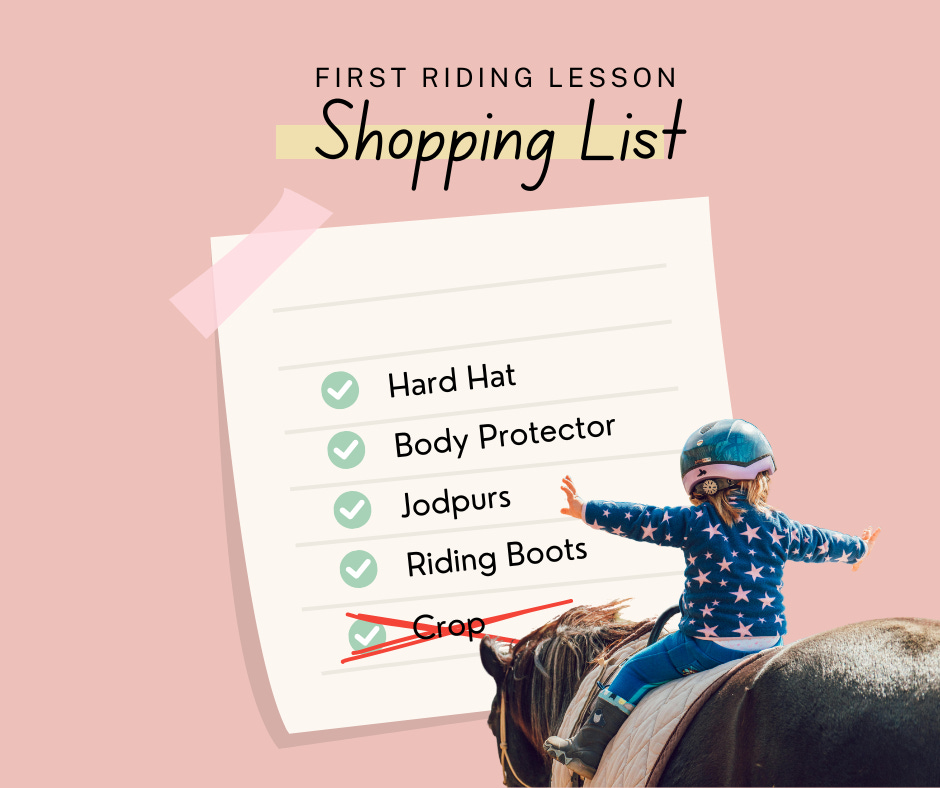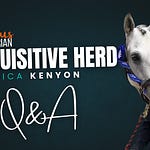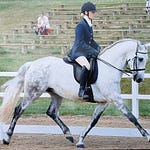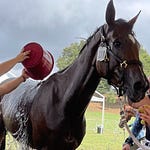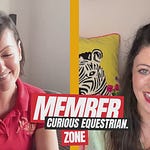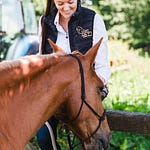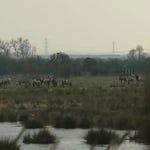Welcome, Curious Equestrians, to this week's Herd Highlights, our membership-exclusive discussion, where Anna Louise and I tackle the trending topics that have the equestrian world talking. This week's episode sparked quite the debate about rule changes, whip use, and the shocking reality of how uninformed horse feeding nearly killed Anna’s beloved rescue horse.
Watch & Listen Options
Free Subscribers: While this episode is exclusive to our Inquisitive Herd, you can still join the conversation by reading our detailed analysis below. Join the Inquisitive Herd - Special Offer → This offer is exclusive to our newsletter subscribers and expires at the end of May 2025.
Episode Overview: British Dressage Rules, Whip Debates & Horse Feeding Dangers
We looked at the latest welfare rule changes from British Dressage, British Show Jumping, and the FEI and questioned whether these surface-level adjustments truly address the equestrian world's fundamental welfare issues.
Key Discussion Points from This Week's Episode
"It's just a little plastic measure. Does it really need until 2026 to fully roll this out?" — While I welcome the introduction of a noseband measure, I can't help wonder why it's taking so long to roll out?
"You are encouraging a child to be violent... That is actually inciting violence and saying it is okay to be physically violent to this animal." — Anna Louise's powerful observation about whip use in riding instruction challenges us to examine what we're really teaching young riders. We both looked back on our childhood experiences and started really questioning the role of whips as a standard piece of equipment, especially for children.
"How come you can be the owner of a whole herd of horses and never get checked up on... but you can be a sheep owner and have these spot checks?" — A thought-provoking comparison reveals the regulatory gaps in horse welfare oversight. As Anna has a small sanctuary, she draws comparisons with the checks on 'farm' animals and the lack of the same for horses.
"Your kindness may kill them." — The heartbreaking reality behind well-meaning strangers feeding horses without permission, illustrated through Anna's near-tragic experience with her rescue horse Diesel.
Horse Connection Spotlight: Diesel's Near-Death Experience
Diesel nearly died from laminitis caused by tourists feeding him bags of apples from the farmer's market. Despite thousands of pounds in veterinary bills and careful management, tourists continued feeding him, causing his condition to worsen until Anna and her mum discovered the source. Diesel survived but now has a rotation in his hoof, requiring lifelong vigilant care, a stark reminder of how "kindness" from strangers can have devastating consequences.
Essential Resources & Expert References
Campaigns Against Unauthorized Horse Feeding
#BeHorseAware by The British Horse Society (BHS) This national campaign educates the public on the dangers of feeding horses without the owner's consent. It provides downloadable signs and resources to help spread awareness. The British Horse Society
Updated Countryside Code The UK government's Countryside Code now explicitly advises the public not to feed livestock, horses, or wild animals, aiming to prevent harm caused by well-intentioned but inappropriate feeding. The Countryside Code: advice for countryside visitors - GOV.UK
Research by University of Bristol Studies conducted in collaboration with the BHS have documented the negative impacts of public feeding on horse health, supporting the need for increased public education and awareness. January: #BeHorseAware | News and features | University of Bristol
Research on Whip Use in Equestrian Sports
World Horse Welfare: Review of the Use of the Whip in Racing Analyzes the effectiveness and ethical considerations of whip use in horse racing. World Horse Welfare
Canadian Horse Journal: Whip Use in Equestrian Sports Discusses survey findings on riders' perceptions and usage of whips in various equestrian disciplines. Horse Journals
Horses and People: Whip Use in Equestrian Sports Explores the debate surrounding whip use and the push for regulatory changes. Horses and People
Regulatory Frameworks: Livestock vs Horse Welfare
UK Animal Health and Welfare Framework Outlines the statutory duties of local authorities in relation to the health and welfare of farmed animals in England. GOV.UK
Animal Health and Welfare Pathway A UK government initiative supporting continual improvement in farm animal health and welfare through partnerships with farmers and vets. GOV.UK
The Guardian: UK Failing Animals with Just One Welfare Inspector for Every 878 Farms Highlights the challenges in enforcing animal welfare standards due to limited resources. The Guardian
Protective Signage Solutions
"Please Do Not Feed The Horses – Your Kindness May Kill" Sign Available on Etsy, this sign warns the public against feeding horses without permission. Available from multiple suppliers including Etsy, and safetysign.com.
Complete Guide: 2025 Equestrian Welfare Rule Changes
British Dressage: Equine Welfare Action Plan & Noseband Gauge
In December 2024, British Dressage (BD) unveiled its Equine Welfare Action Plan, emphasizing governance, training, and sport development to prioritize horse welfare. Key initiatives include: British Dressage Equine Welfare Action Plan | British Dressage
Noseband Tightness Measurement: BD plans to pilot the FEI's noseband measuring device in late 2025, aiming for full national implementation in 2026. This tool ensures nosebands are not excessively tight, promoting horse comfort.
Whip Length Restrictions: A new maximum whip length has been introduced across all BD competition levels; whips may now be no longer than 1.2m (measured from the top of the handle to the very end), 1m on ponies.
Ear Hair Trimming Ban: Trimming the hair within the rims of the auricles (outer ears) is prohibited from July 2025, except for veterinary reasons, to protect horses from insects and noise.
Whistleblowing Policy: BD has introduced a whistleblowing policy to encourage reporting of welfare concerns, ensuring transparency and accountability within the sport.
British Showjumping: Padded Baton Regulations
Effective January 1, 2025, British Showjumping (BS) implemented stricter rules regarding the use of padded batons (formerly referred to as whips) to enhance equine welfare: British Show Jumping Rules 2025
Permitted Use: The padded baton may only be used as an aid to support the natural aids in encouraging the horse forward or to support the shoulder to encourage the horse in the desired direction.
Prohibited Actions: The baton must not be used to discipline or punish the horse/pony, nor to vent an athlete’s temper. Such use is always considered excessive.
Usage Limits: The baton must not be used more than three times in total while in the arena.
Post-Refusal Use: The baton is not to be used immediately after a refusal, run-out, or elimination in either the competition or practice arena.
Technique Restrictions: The arm must not come above the shoulder, and the baton should contact behind the rider's leg to reinforce the leg aid.
Shoulder Support Use: When used to support the shoulder, the rider must retain both hands on the reins and apply contact or direct pressure with the baton down the shoulder. No more than three contacts are allowed on the shoulder while in the arena.
Disciplinary Actions: Misuse of the padded baton in the arena, practice arena, or anywhere on the showground will result in disciplinary action.
FEI: International Welfare Regulations
The Fédération Equestre Internationale (FEI) introduced several welfare-focused rule changes for 2025:
Noseband Tightness Standardization: A new FEI measuring device for noseband tightness will be introduced across disciplines starting May 1, 2025, to ensure consistent and reliable readings. FEI Dressage Rules - Changes for 2025
Ear Hair Protection: Hair in horses’ auricles cannot be removed, as it protects against insects and noise.
Medication Restrictions: Horses can no longer be administered injections of substances not listed on the Prohibited Substances List on the morning of competition if their class begins after 18:00. Vitamins and minerals may only be given in emergencies with supporting veterinary documentation.
Pony Measuring: Ponies attending Pony Measuring Sessions must be fit to compete and must not be wearing shoes that are less than 5mm in height. Ponies under 108cm and aged 6–8 years may receive an FEI Interim Measuring Certificate. Ponies that measure out can be re-measured twice.
Horse Inspections: Eventing and Driving horses must undergo a clinical examination for heart health upon arrival. Horses presented for inspection must be competition-ready with respect to wearing hoof boots or being barefoot and may not wear ear hoods. Para Dressage horses require additional veterinary checks in the event of a horse or athlete fall.
Community Question of the Week
Do you think whips are necessary in modern horsemanship? What role, if any, should they play in 2025? Share your thoughts.
Should the pony mad children's shopping list change?
As always, we welcome your feedback and questions, so please don't hesitate to reach out to us - simply reply to this email.
Listen to this episode with a 7-day free trial
Subscribe to Curious Equestrian to listen to this post and get 7 days of free access to the full post archives.



